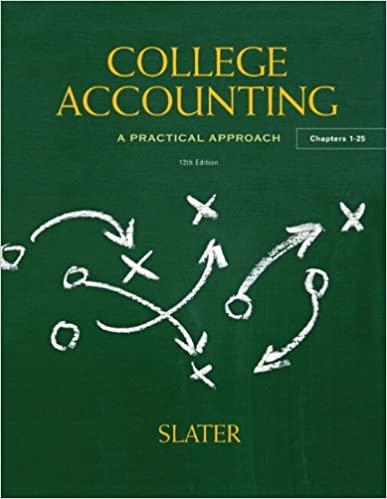And the Number 1 for sales this month is . . . Carrie Zabrinsky smiled broadly and
Question:
“And the Number 1 for sales this month is . . .” Carrie Zabrinsky smiled broadly and paused to add a little suspense to the announcement. As a development agent for Subway, she had decided to give the franchisees in her region a little push by spurring some healthy rivalry among them. Every month for the next year she was holding a contest to see which franchisee had the highest sales.
“. . . Stan Hernandez for his Subway of Los Palmos!” announced Carrie. “Stan, come up here and get your award.” Stan bounded up to the stage, still in a state of shock. Carrie handed him a handsome framed certificate as well as a travel voucher for two nights—all expenses paid—in the Sunset Sands resort.
“Wow!” was all Stan could say at first, but he quickly gained his composure and even delivered a short speech. Stan thanked Subway for providing a wonderful business concept and product. He thanked his wonderful, hardworking employees, his junior partner Ron, and also his accountant Lila. “While it’s true that we rang up the sales, Lila Hernandez crunched those numbers,” Stan told Carrie, “and gave me a crash course in accounting!”
Carrie’s new contest requires the franchisees in her region to send her a lot of accounting information—information that not only enables her to see which restaurant has the highest sales, but also allows her to do some troubleshooting. Stan e-mails a monthly management report to Carrie that includes an income statement.
He does the balance sheet quarterly, and Carrie then does a horizontal analysis of Stan’s balance sheet, comparing each line to its budget and to last year. That information tells her whether Stan is on target and points out any weak areas in the business.
Then she does a vertical analysis of Stan’s balance sheet to arrive at percentages of the totals.
Carrie compares Stan’s results (in percentages) with each of the other restaurants in his region, using a common-size statement. This exercise is useful because, although each shop is different in size, a common-size statement deals only in percentages.
This comparison quickly points up exceptions, which may be good or bad.
In either case, Carrie Zabrinsky then has the clues she needs to discover a strength other shops can copy or a weakness Stan can fix.
“So, Stan the Man,” said Ron Ebbers after the award ceremony, “are you going to take me to the Sunset Sands to celebrate? As your junior partner, I feel I should share in your success.”
“We’ll just wait until our c-store is number 1 in sales!” said Stan. “In the meantime, I think it’s the perfect time for Ana and me to take our first trip together.” Stan Hernandez had a lot to celebrate—a budding love relationship, a thriving business, and a renewed friendship with Ron that had turned into a promising partnership.
“In fact,” said Stan, getting out his cell phone, “I’m going to call Ana right now to tell her the good news!”
Discussion Questions
1. Why does the development agent use a common-size statement to compare restaurants in her region?
2. Why does she use both horizontal and vertical analyses of the balance sheets for the restaurants in her region?
Step by Step Answer:

College Accounting A Practical Approach Chapters 1-25
ISBN: 9780132772068
12th Edition
Authors: Jeffrey Slater





